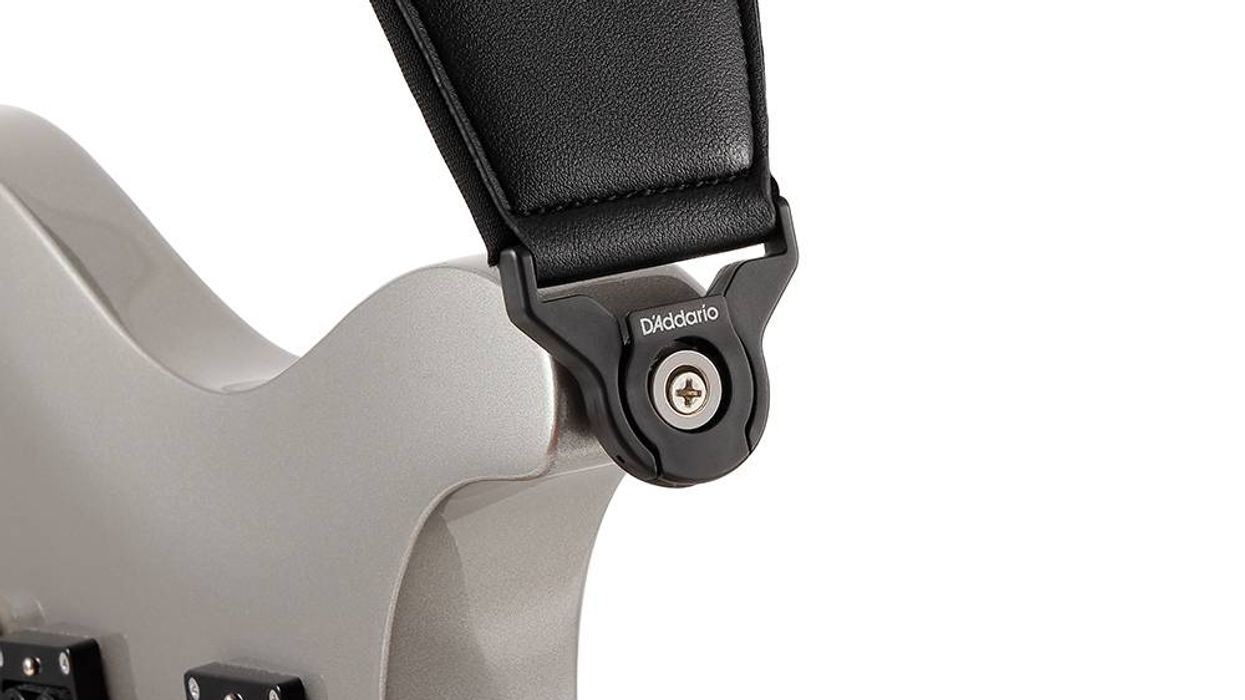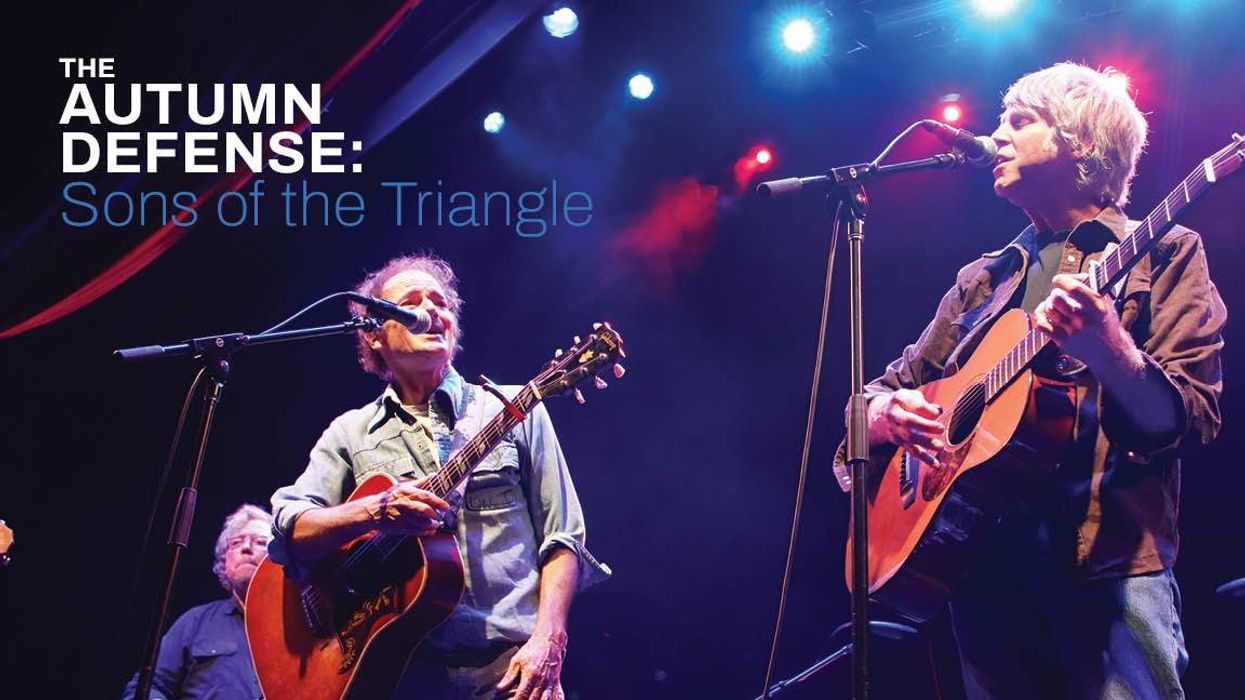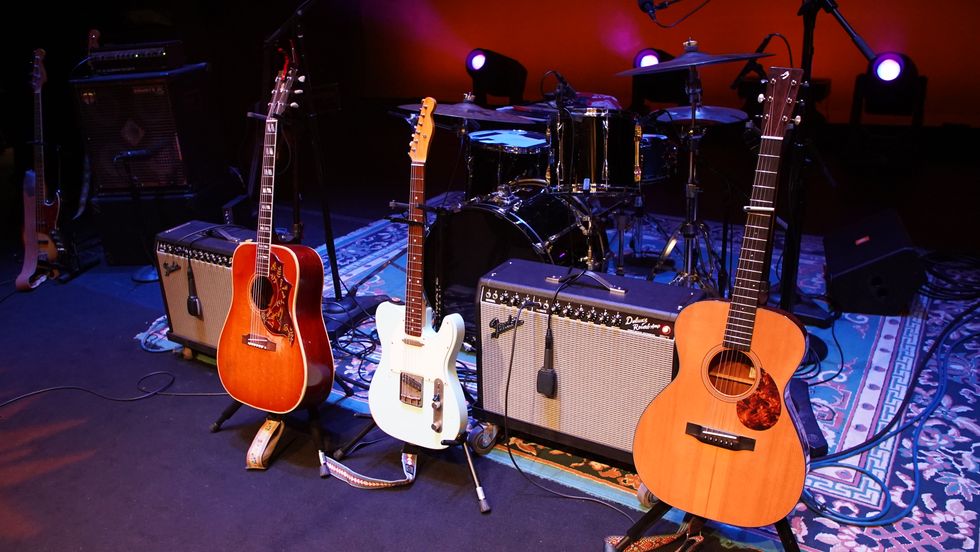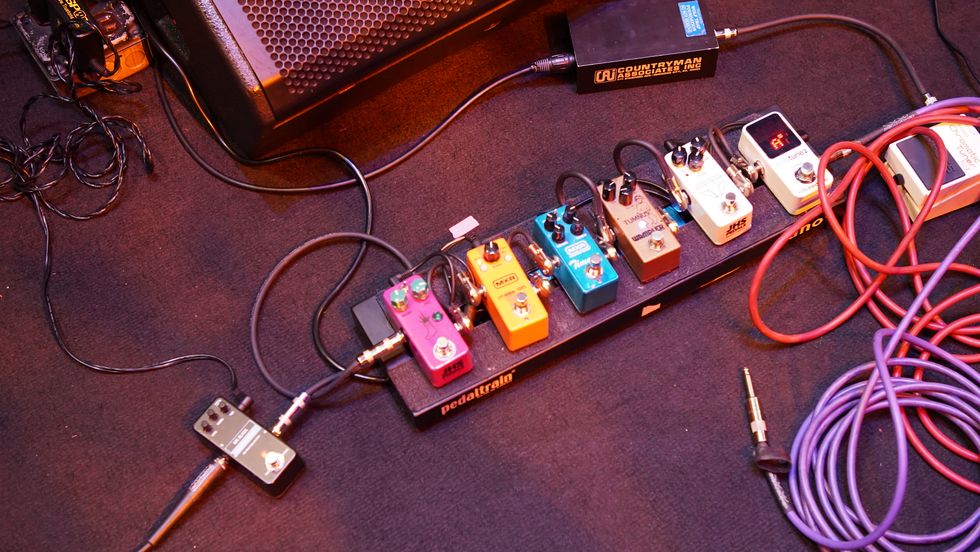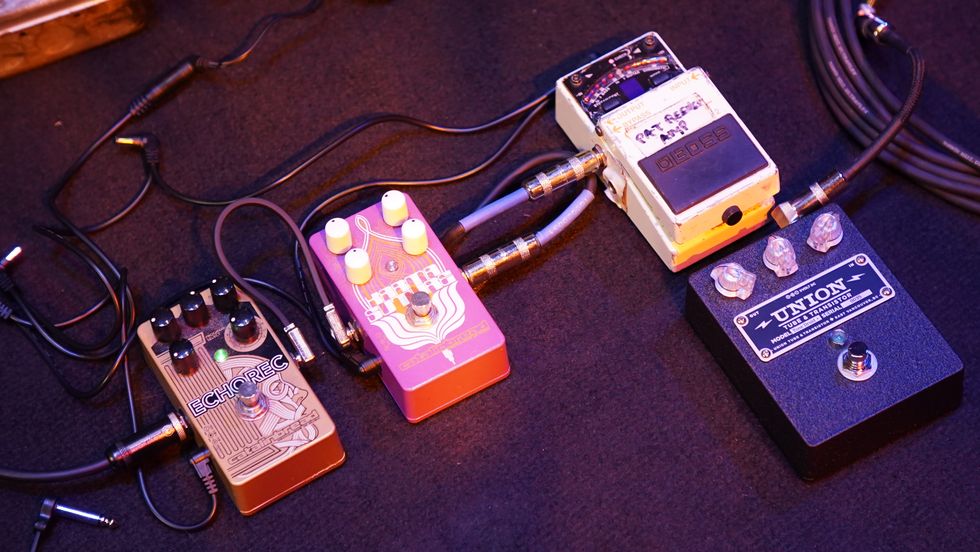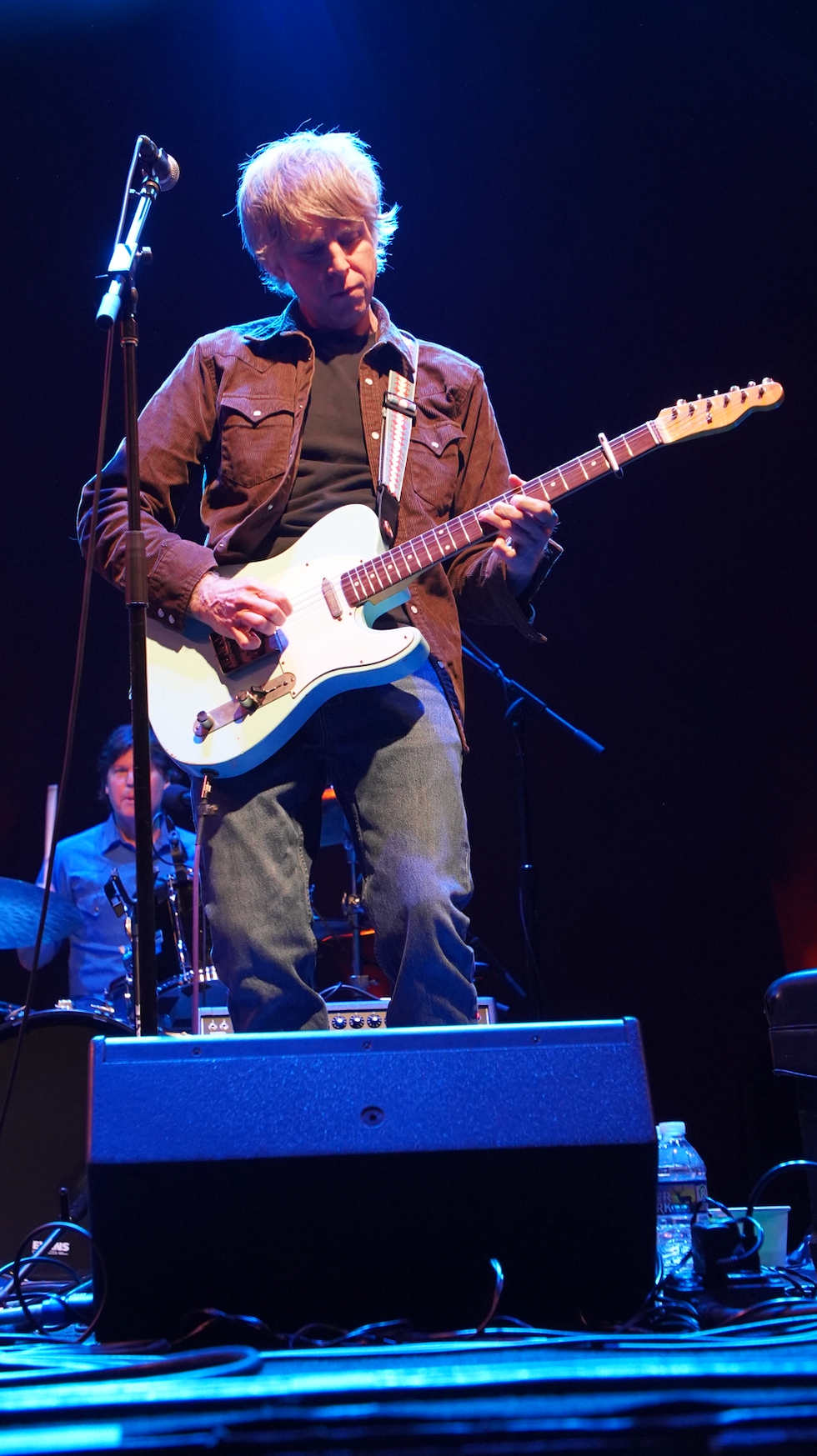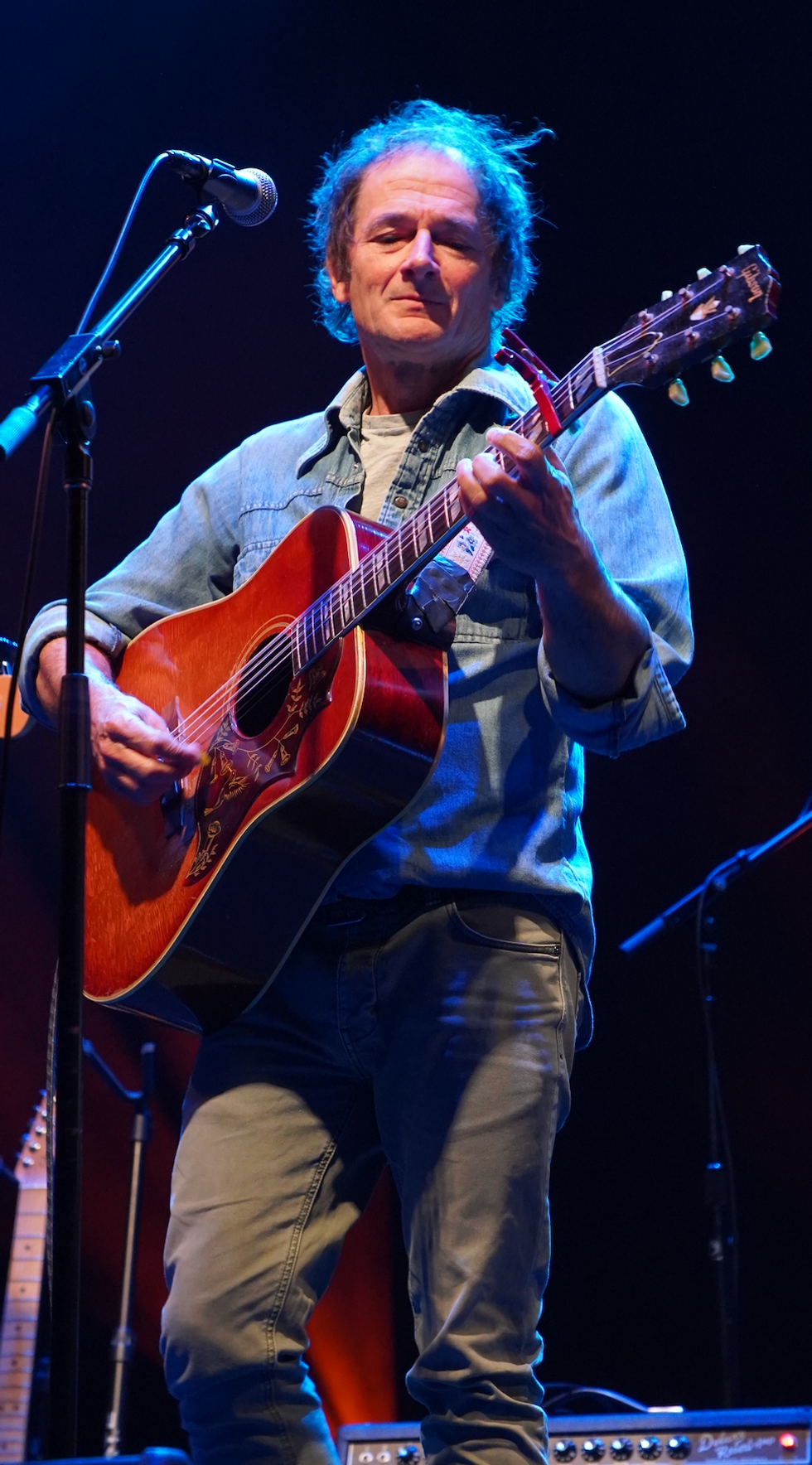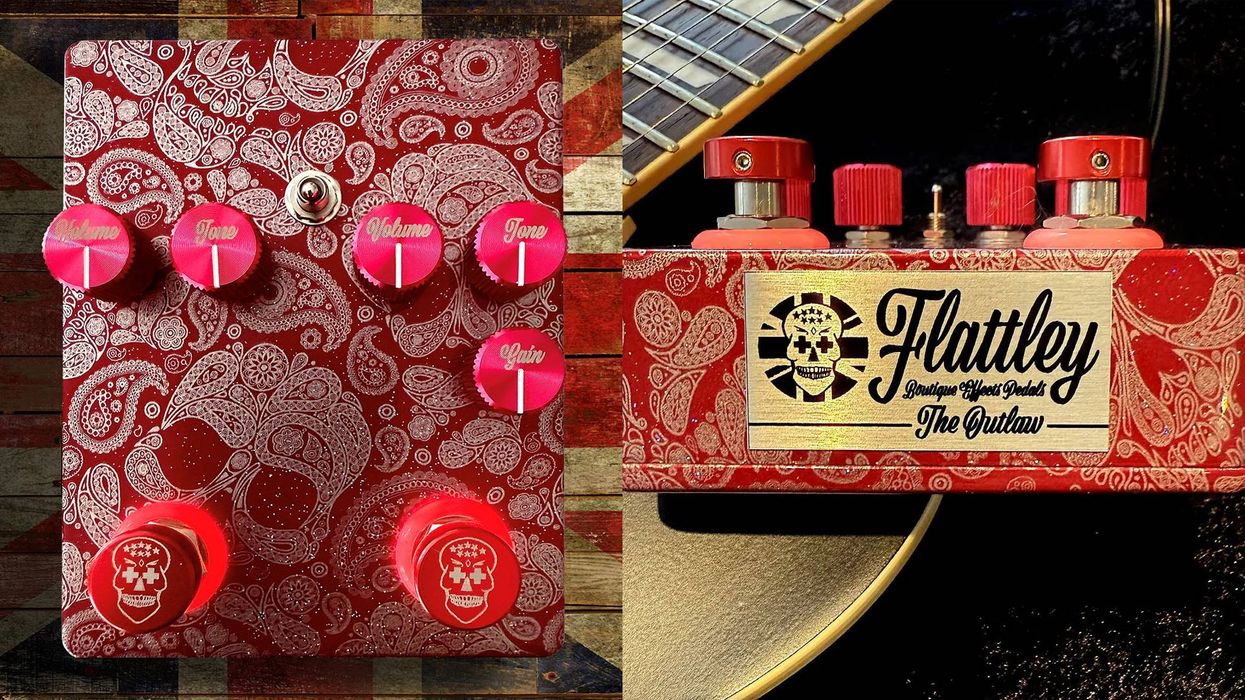Internationally syndicated cartoonist Tony Cochran brings an entirely new meaning to “Frankenstein-ing” a guitar: He produces uniquely over-the-top instruments in his Columbus, Ohio, workshop by giving closet-banished guitars an opportunity for a new life. With a fine arts background and a nod to the work of experimental pop-artist Robert Rauschenberg, Cochran approaches his instruments as functional works of art and no two are alike. In fact, there is probably not one that’s like anything you’ve seen before.
Like Rauschenberg, Cochran incorporates found objects into his work that others may consider as junk. He’ll start out with well-made copies of classic guitars he finds at garage sales, Craigslist, and other various outlets before beginning the modding process. But we’re not necessarily talking about swapping pickups, tuning machines, or other hardware—though he does repair any damaged or worn part to work as it was originally designed. Cochran will find his very unique appointments for the instruments by combing through boxes of junk at unlikely places like church bazaars to Salvation Army stores to garage sales.
Once in his workshop, the guitars are sawed, gutted, routed, and whatever else is needed to accommodate their evolution, along with a number of finish-altering techniques that may or may not involve acid, paint thinner, wax, or something else entirely. “Rare guitars are safe from me. I won’t cut up anything classic or with historical significance,” contends Cochran. “But what isn’t safe is the history of the guitar I’m reimagining. A new look demands a new story.” That’s exactly what happens. Beyond their new aesthetic, each guitar takes on its new life with a much more detailed—and often sordid—past history than it had before.
“The only mod I ever performed on a guitar before this project was painting a Zeppelin logo on my mom’s Danelectro in the ’70s (without her permission),” says Cochran. “She was more into Johnny Cash and Roger Miller, so she made me scrape it off.” But Cochran adds, “I mod everything. I can’t leave anything alone.” And he has—from his lawnmower to a Harley to his truck to a power sprayer. Cochran’s clientele spans the globe and includes musicians, music producers, art collectors, and pop stars—people who “love guitars, love art, and aren’t averse to buying something a little outside the box. Having some disposable income seems to help.” He recently had a couple buy one as their 20th anniversary gift to each other. “Beats a blender!” says the luthier.
The incorporated parts—with names ranging from bird flauters to industrial slooters to pictulators—“should look like they belong on the guitar, not a piece of something that I just stuck on there.” When asked about specifics on his appointments, Cochran shared, “I could tell you, but charges could be filed. Seriously, if I pointed out a unique part, then someone would only see that part, not the guitar as a whole.” Shown here are just a handful of Cochran’s unique instruments, along with details on their “new-old-history.”
Pricing and Availability
Priced between just above “I’ll take it” and
just under “Oh, my God,” Cochran produces
8-15 guitars per year and sells them directly
through his website, which is managed by his
wife and partner Vickie Smith. Cochran contends
that if it weren’t for her, “I would just
have a pile of cool guitars in my basement.”
Though he usually finds the guitars on his
own, he also enjoys working with a guitar
supplied by a customer. Although he likes to
retain as much artistic license as possible, he
will work with requests to incorporate a supplied
part or two. “Provided it’s the proper
scale, it’s not a problem.”
tonycochranguitars.com
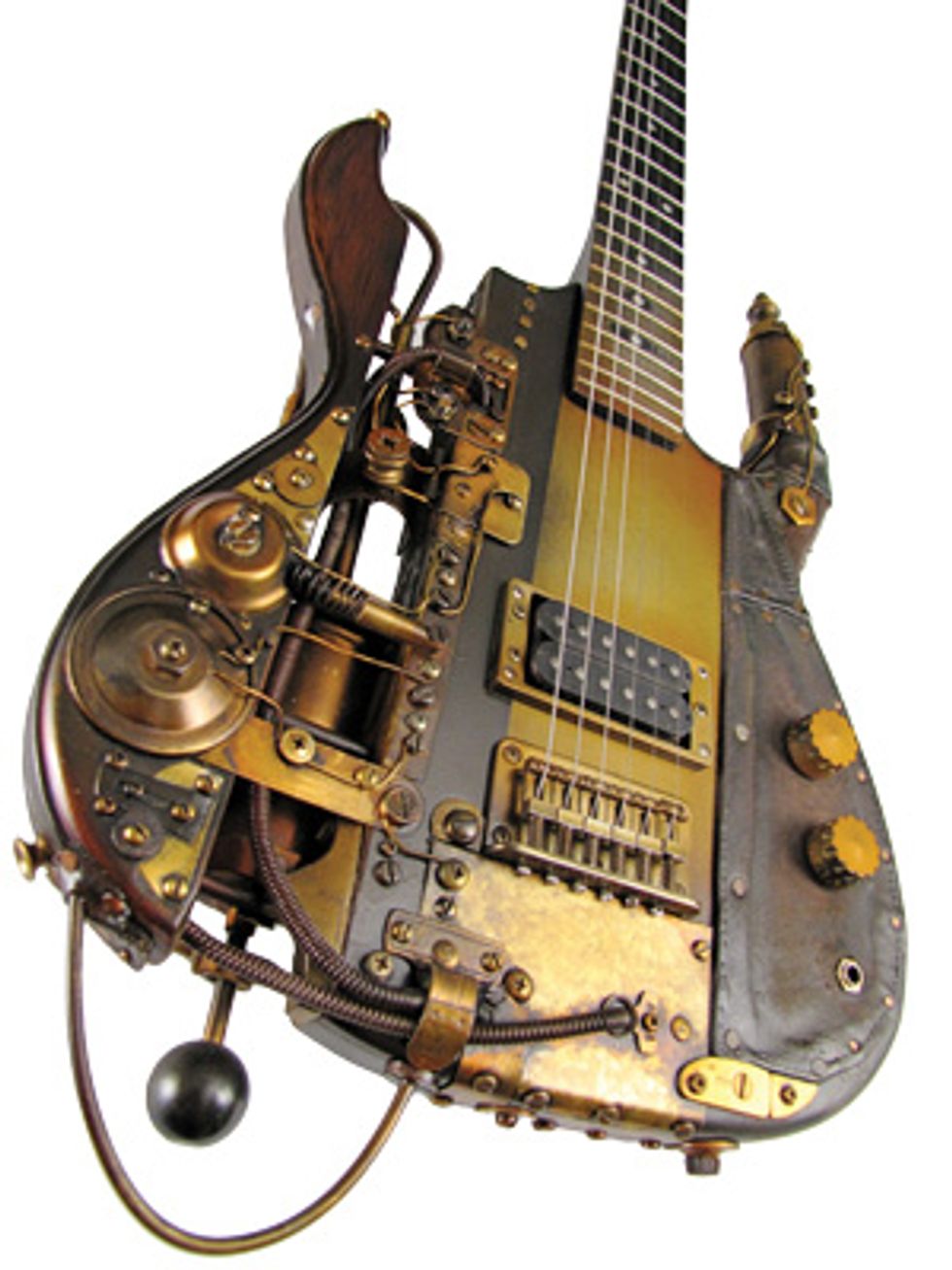
Boostercaster
The Boostercaster was selected
for inclusion in GUITAR: The Instrument
That Rocked The World,
the traveling exhibition of the
National Guitar Museum. According
to Cochran: “This guitar was
found under a hidden panel in the
floor of a former mental sanitarium
being demolished in Weedle, Louisiana.
It was wrapped tightly in
oilcloth and string. There was also
a note that said ‘Better to just put
it back, but I know you won’t. Do
not touch booster while playing.’
What can I say … I haven’t!”
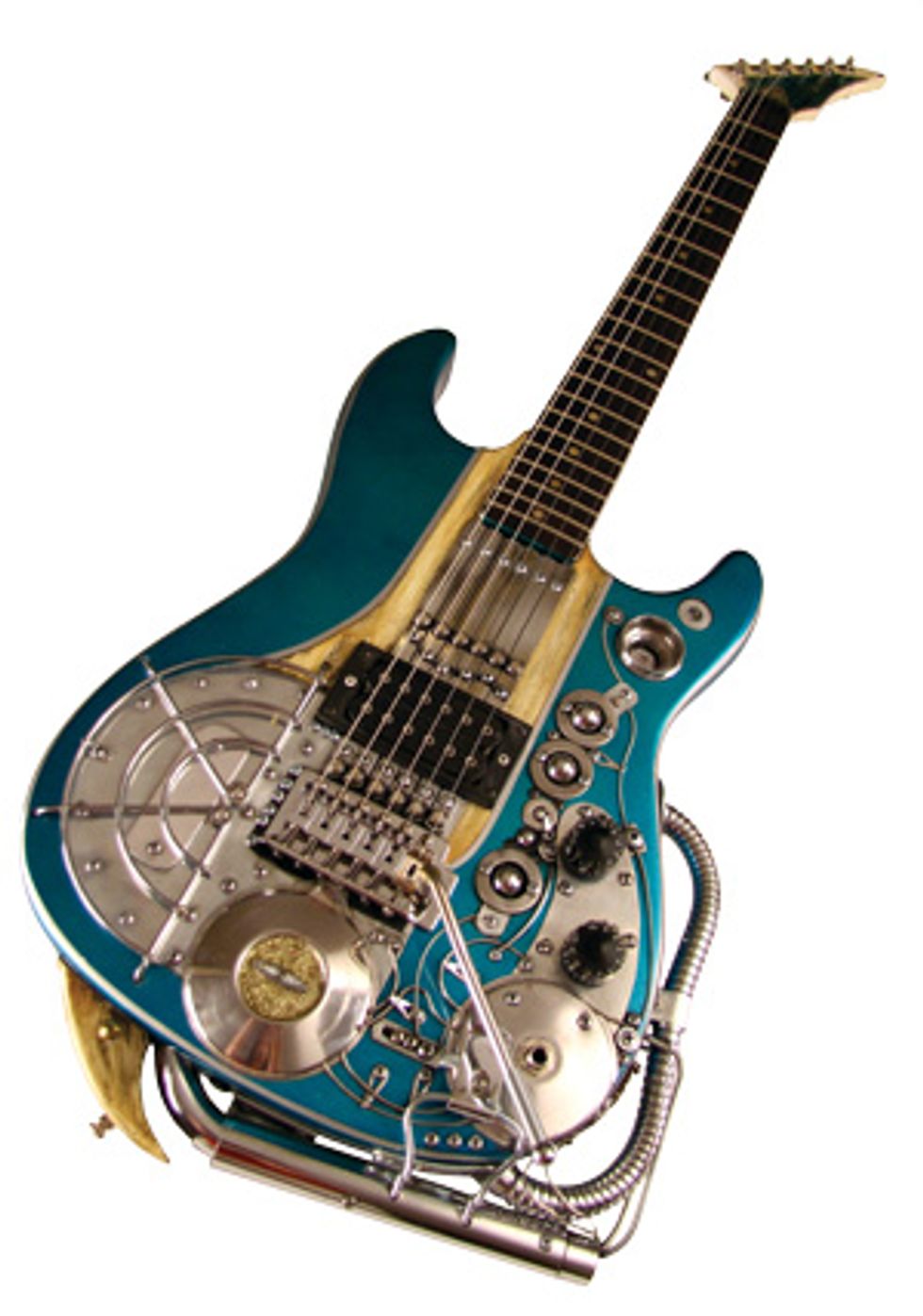
Memphiscaster
“Jack N. told me his Uncle
Donny customized this guitar
from scavenged pieces
of a satellite that crashed
into his backyard sometime
during the summer of 1956.
After the modifi cations
were made, however, he
claimed that playing it made
him queasy and paranoid.”
Cochran continues, “Jack
traded him for a banjo, but
said he was never comfortable
playing the guitar
either. I traded Jack an old
Dodge truck for the guitar,
but I won’t play it.”
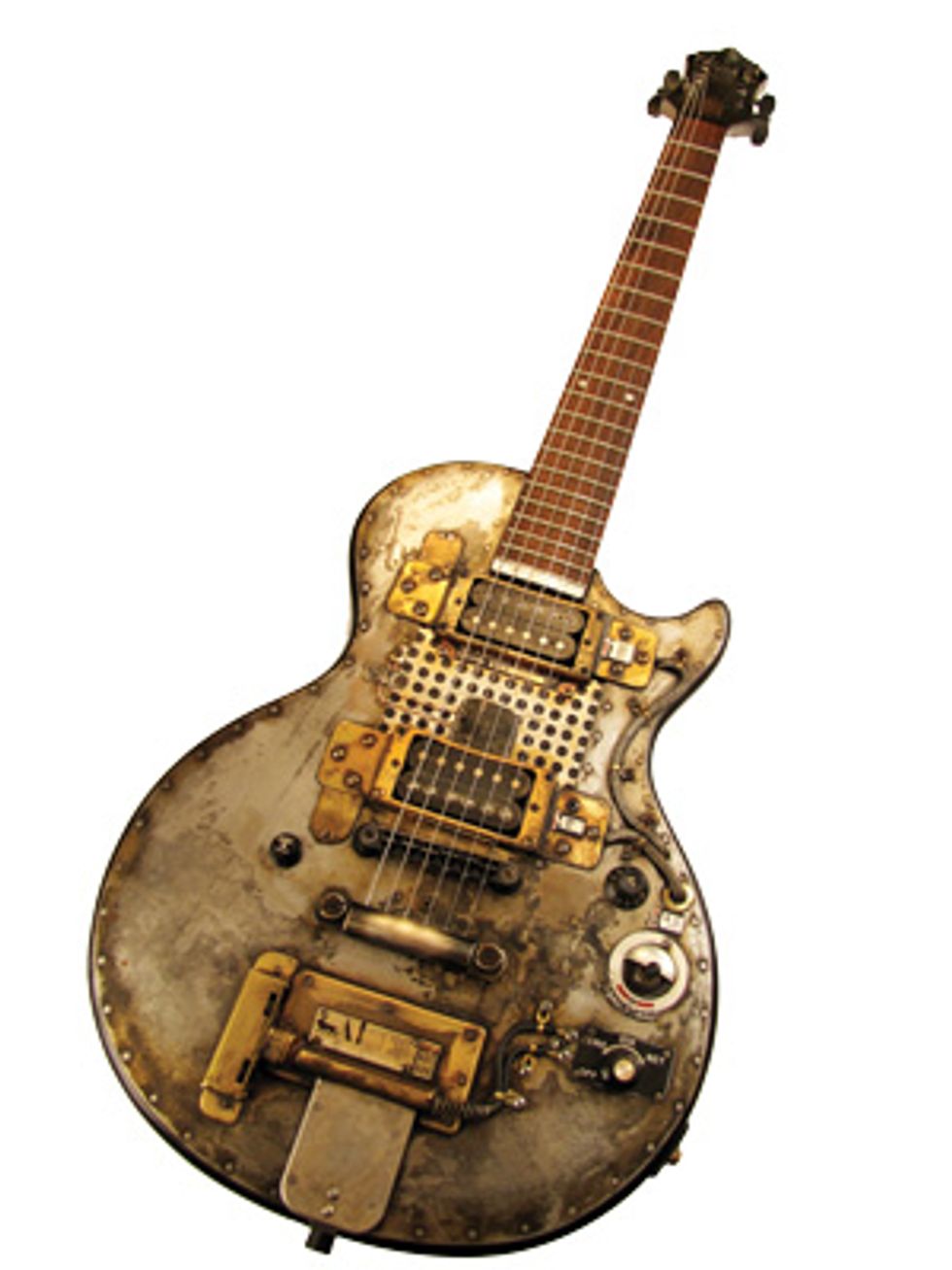
Oikcaster
“The Oikaster was used by
Sam ‘Splat’ Redcat during his
final performance in 1970,”
shares Cochran. “He was
closing the East Thompkin
Blues Festival with his violent
acid-rock/blues version of
‘Dead Man’s Curve,’ originally
performed by Jan and Dean.
It’s highly modified and not
UL approved. A combination
of rainstorm, bare feet, and a
bootleg amperage booster on
the imaginative wiring he used
for ‘big gain up top’ fried him
like a breaded chicken leg. It
used to be shiny.”
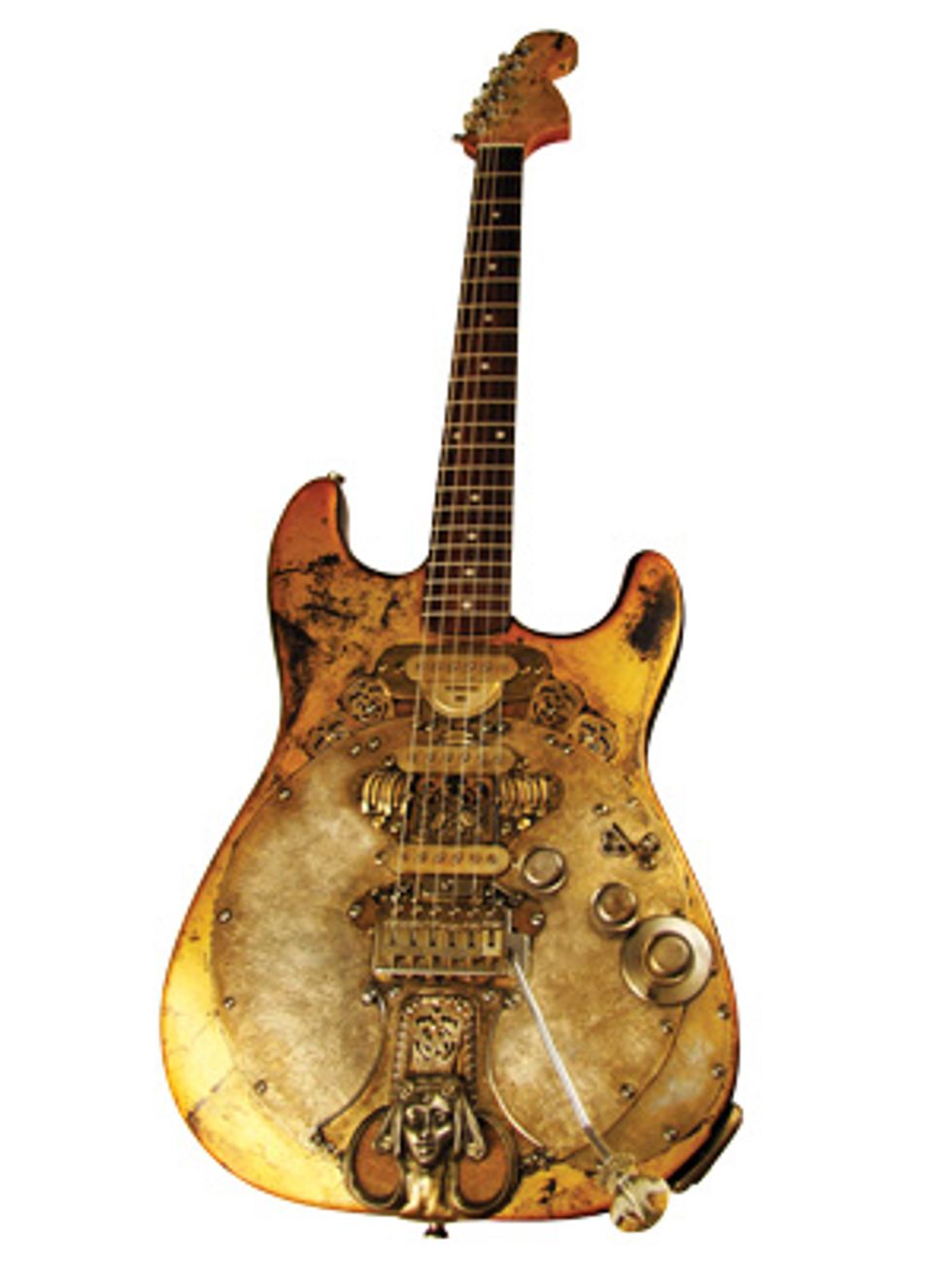
Chalicecaster
“The Chalicecaster was found
in a sealed, cedar case locked
in the trunk of a beautiful 1957
Cadillac that was purchased
at an estate sale in North Chicago.
Who owned this puppy?
Could have been a priest, but
could have been a vampire,”
muses Cochran. “Same weird
vibe and it has some wear, but
you have to admit it’s pretty.”
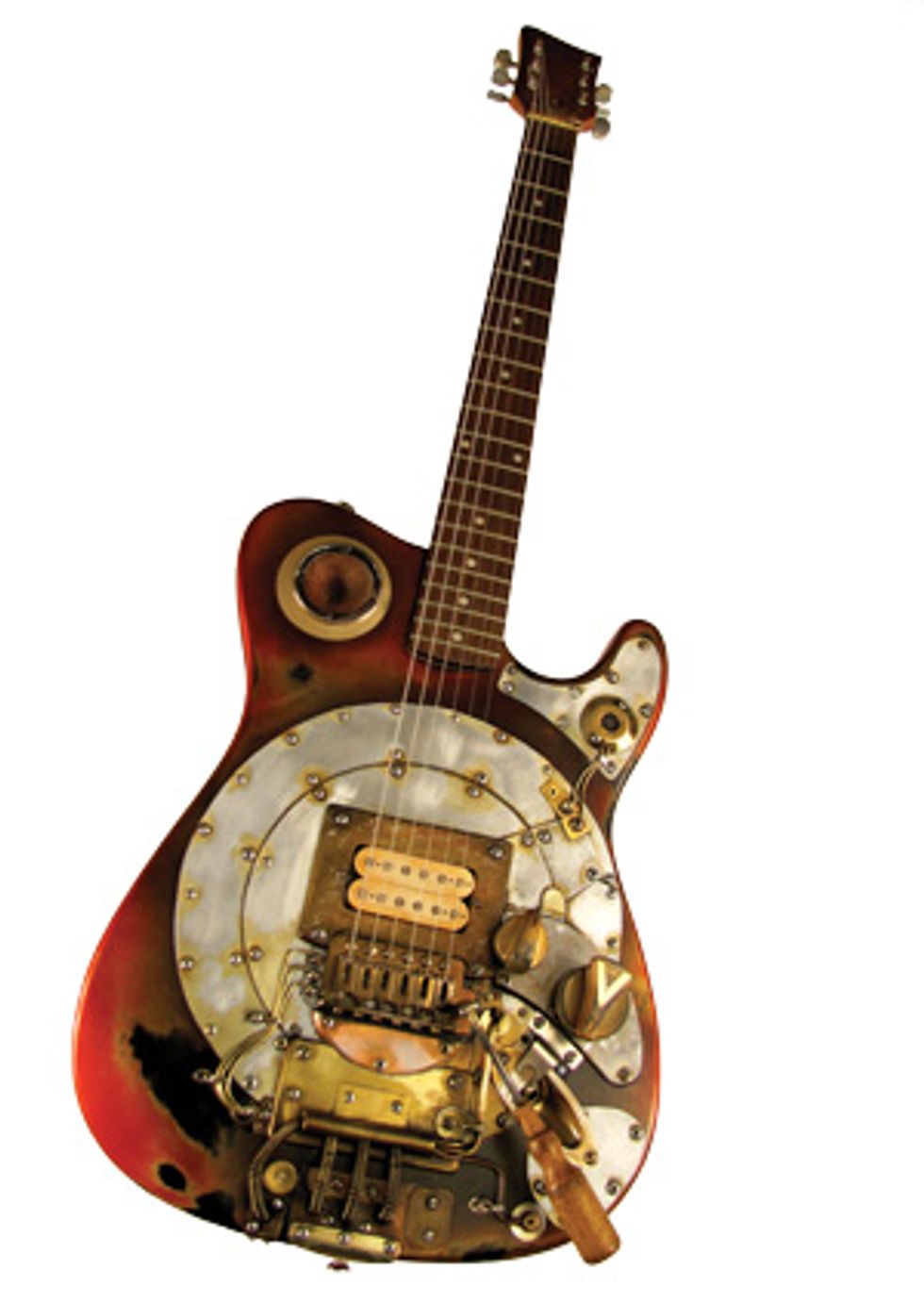
Tokyocaster
“Private Eldon R. found
this instrument in a
steaming pile of rubble
in 1964 while he was
patrolling a burned-out
village on the Mekong
Delta. It was in remarkably
playable condition
despite some charring
and corrosion. While the
village chief would not
say how it got there, he
sure seemed glad to be
rid of it,” says Cochran.
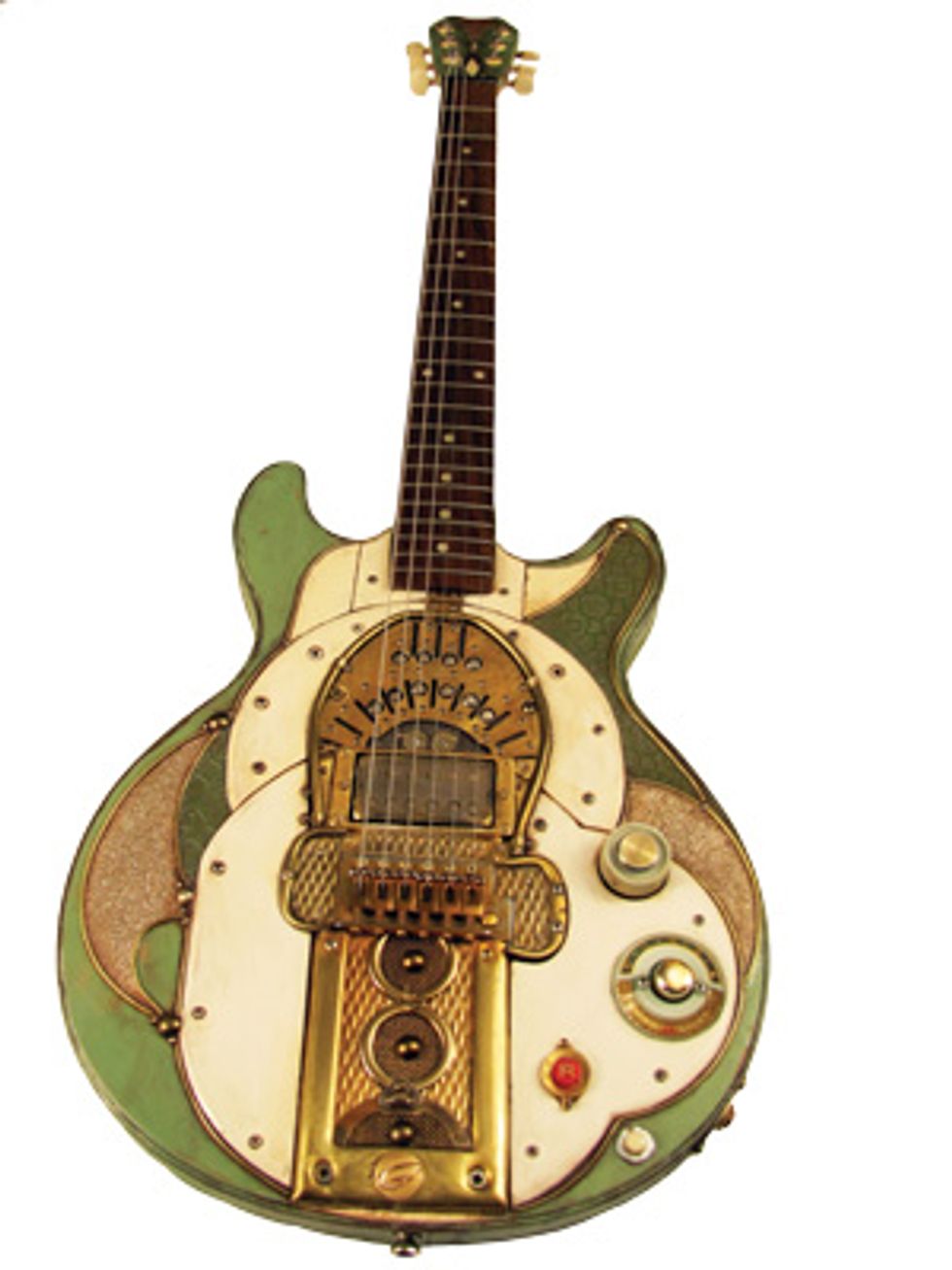
Jukeboxcaster
“John Redstone was rehabbing
the Old Dog Saloon in
Finster, Wyoming. He found
this behind some double thick
sheet rock in what had
originally been the ladies
room. It had an unreadable
note taped to the strings and
a diagram of how to wire up
the red button marked ‘R’
underneath the tone knob.”
Both come with purchase
and the brown stain on back
probably isn’t blood,” shares
the luthier. “This guitar might
be Fat Jelly Marburn’s ‘Big
Green.’ Let’s hope not.”




